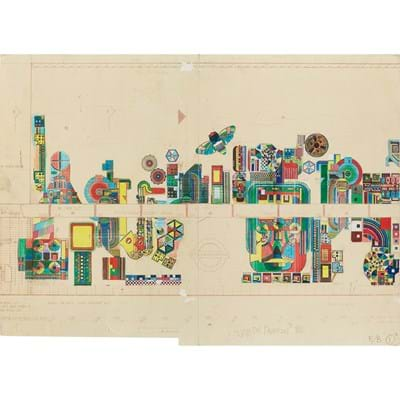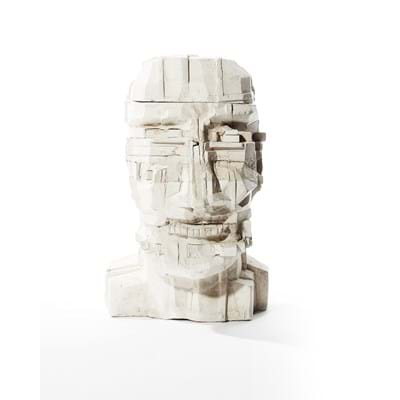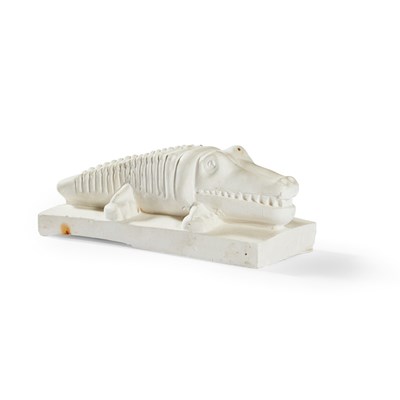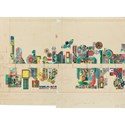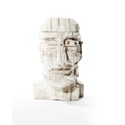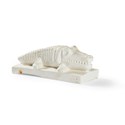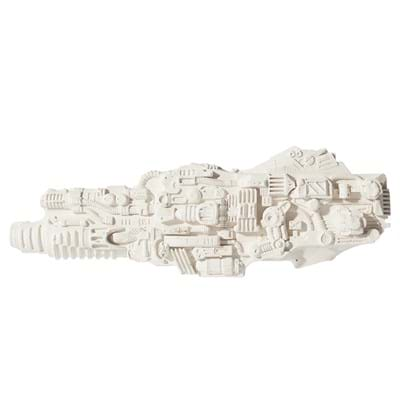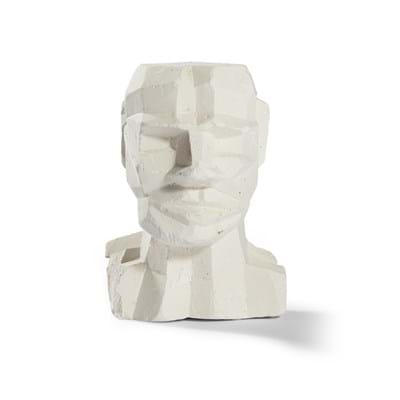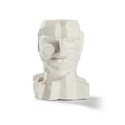Originally installed in the 1980s, they were the work of Eduardo Paolozzi (1924-2005), an artist regarded as a British pop art pioneer. While it is fair to say that his eye-catching, exuberant images divided opinion among the Tube passengers – something of a ‘Marmite’ nature – the outcry over the possible threat to his art was heartfelt.
But, in what the Guardian dubbed “perhaps one of the largest public art conservation projects of recent times”, completed in February last year, about 95% of the originals were preserved in situ. Others were taken elsewhere. The arches mosaics over the escalators, for example, will be restored and reconstructed in the University of Edinburgh - Paolozzi’s native city - in a project led by the local college of art (where the artist studied in 1943 and later became a visiting professor).
Also based in Edinburgh is well-known auction house Lyon & Turnbull, and among the lots on offer in its August 17 sale are six works by Paolozzi – including a Study for Tottenham Court Road Underground Mosaics estimated at £20,000-30,000. It is dated '82.
The plasters for sale are from one consignor who was a close friend of the artist, and the mural design is from another.
Mosaics debate
L&T specialist Charlotte Riordan told ATG: “A couple of years ago we hosted and chaired a very popular and successful panel discussion in London on the fate of the Tottenham Court Road murals at the point they were being removed, with panellists including Daniel Herman of the Whitechapel Gallery, the gentleman who commissioned the murals for London Transport at the time, and a representative of the 20th Century Society. It was very well received.”
She added: “We handle Paolozzi’s work very regularly. He’s a popular name here. He was also known to frequently gift artworks to his many friends and acquaintances. I believe we actually share the world record for the auction of one of his sculptures [Master of the Universe edition of four bronze sold in September 2006 for a premium-inclusive £138,150].”
The Whitechapel Gallery (east London) held a major Paolozzi retrospective from February-March this year.
Regarding the Paolozzi collecting market, Riordan told ATG: “Historically, he very much seems to have been collected by fans specifically of his work. I’m sure you’d agree that his stature as a trailblazer and influencer is growing in recognition, and we hope that he is coming to the attention of collectors in the field who may not be aware of his importance.
“He’s always been popular but his prices only reach dizzy heights on an occasional basis – for the most part he remains very accessibly priced. This is partly because he was quite prolific, but partly because his importance has been rather understated over the years.”
As for any impact on prices from the Whitechapel show, she said: “I always find it an interesting question – sometimes the market re-evaluates an artist or group of artists while the academic institutions lag behind, but in this case I think the critical recognition of the Whitechapel Gallery and efforts up here in the Scottish National Gallery of Modern Art will lead to a reaction from the market.
"Perhaps his prominence as a public artist (and I happen to think he is a master in that field) has distracted from his earlier significance in the development of pop art etc.”
Edinburgh born
Paolozzi was born in Leith, Edinburgh, and grew up in an ice cream parlour owned by his Italian immigrant parents. In June 1940 he was interned as an ‘enemy alien’ and tragically during this time his father, grandfather, and uncle were killed when the ship taking them to detention in Canada was sunk by a U-Boat.
On release in 1941 he took over the family ice cream shop but his artistic career then began to take off and he attended classes at Edinburgh College of Art and entered the Slade School full-time in 1944.
To cut a long story short, by the late 1970s he was appointed professor of ceramics at Cologne. He enjoyed a long-running association with Germany and in particular with Munich, where he also had a studio and it was here that he developed the concept of the Tottenham Court Road mosaics.
The mosaics were commissioned in 1979 by London Transport and are designed to link the interconnecting spaces of the station, featuring strongly on the Northern and Central line platforms. They were completed in 1986 and reflect the vibrant atmosphere of surrounding Soho, Fitzrovia and Bloomsbury, home to numerous artists and musicians.
In the study, saxophones and musical notes jostle for space with cameras and electrical circuits, stylised Egyptian and Assyrian motifs reference the nearby British Museum and cogs and film reels rub shoulders with what could be pinball machines or jukeboxes.
Riordan said: “Using collage in a sense to mimic the painstaking method of the eventual mosaic construction, the artist summons up in a single piece of work the essential meaning of this extraordinary and vitally important commission.”


